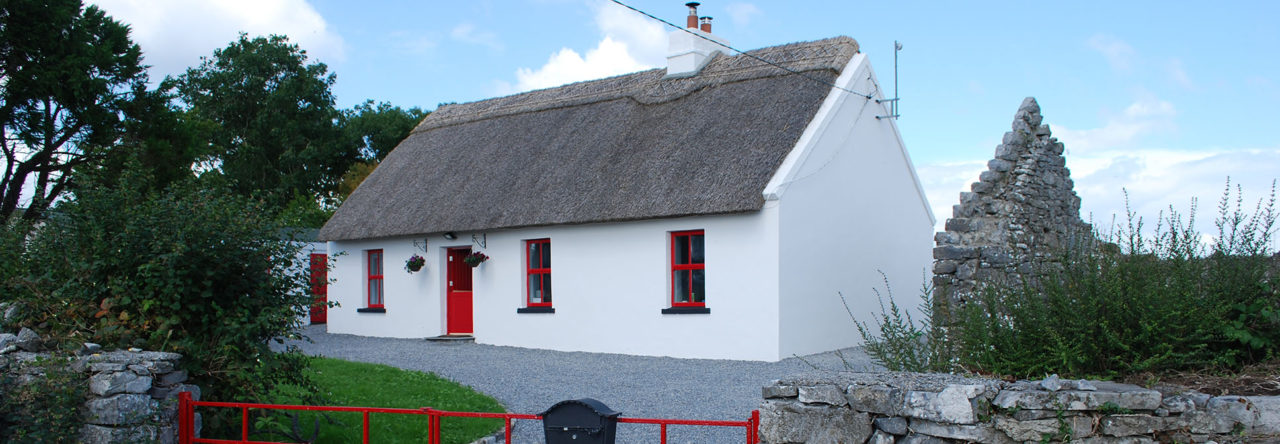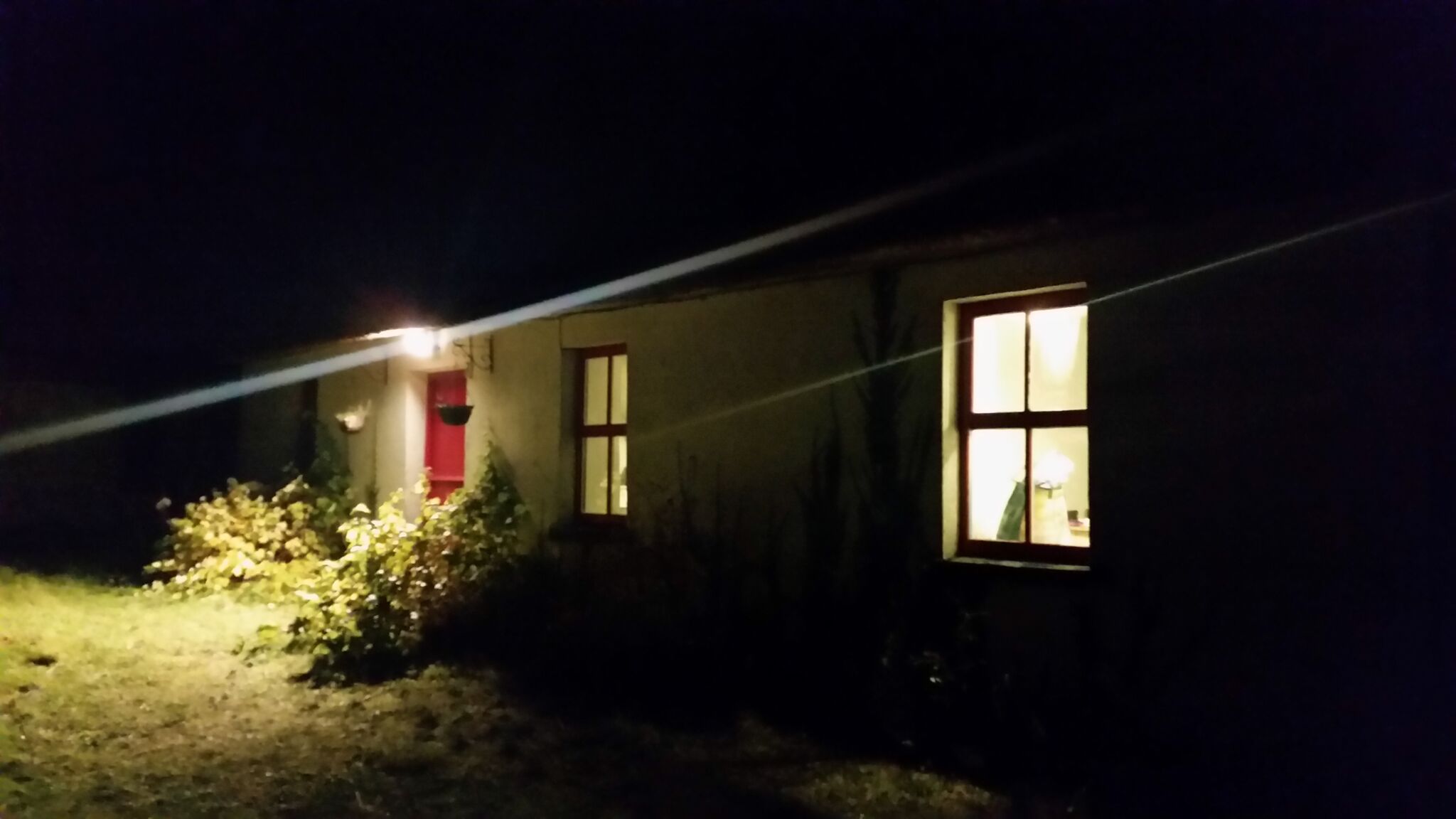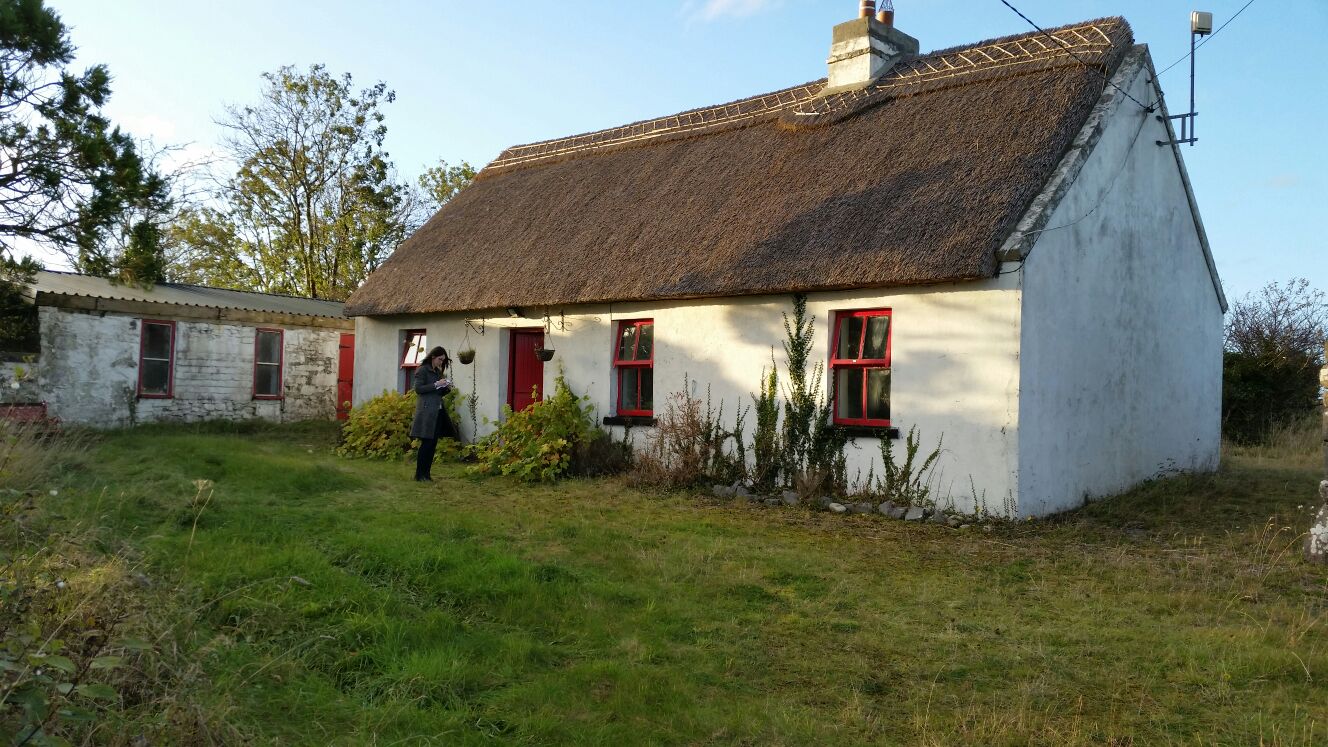After first seeing the cottage in July the sale finally went through at the end of October and we headed to Galway to pick up the keys.
We had only seen the cottage in the summer months and each day Galway had welcomed us with beautiful sunny skies. Despite the overgrowth and work required, the cottage always looked striking and it was that image and our belief in its further potential that kept us motivated during the purchasing process.
Now on a dark day in October as we headed to the cottage for the first time as owners, we couldn’t help contemplating what might await us both on arrival and during the months and years ahead.
With the warm summer long gone would the cottage be plagued with damp?
Did we really understand all the renovations required? Were we going to run out of money and be left with a half-completed uninhabitable cottage?
Was it a huge mistake to take on such a project with us both working full-time in London and having a 3 year old child?
As we drove down the lane to the cottage and saw it appear behind the trees our nerves were instantly calmed! We relaxed and started to enjoy the adventure.
We opened the door to find that the previous owner had cleared away much of the excess furniture and possessions, more than We expected which was great. The cottage had been vacant for a couple of years and there was a damp/musty smell in the air. We set about airing the place out and doing some basic cleaning of surfaces and floors. Then we lit the woodburning stove and dragged out a large old rug which made a huge difference. A couple of hours later it already felt much fresher inside.
Audrey and I were willing to stay in the cottage whatever the condition, but we had our 3 year old daughter to think about and needed to be sure it was clean and safe enough for her. We had a backup plan that we could stay in the Anglers Rest Hotel in Headford, but as evening approached and we started to get the place into shape, we had to stay in our new cottage, insects and all! We inflated some airbeds on the mezzanine floor and settled in for the night.
The next morning we were up early and it was time to get outdoors. We continued to clear things out and were able to have a proper look around the grounds of the cottage.
Over the next few days, we started to make a list of all the immediate things we needed to do if we were going to stay at the cottage while we started on the renovation project.We needed to get an assessment of the electrics and if at all possible we realised we would need internet access to help organise the project as we could not get data on our phones. We realised we would be very dependent on the woodburning stove but found it to be inadequate to heat the cottage. At a very minimum until we looked into getting a new bigger stove we would need to get the chimney swept for safety.
We left that weekend and went back to London both excited and daunted by the mammoth task ahead. We started by planning a trip for a few weeks later, our hope being that we could carry out some of these initial improvements before Christmas.




